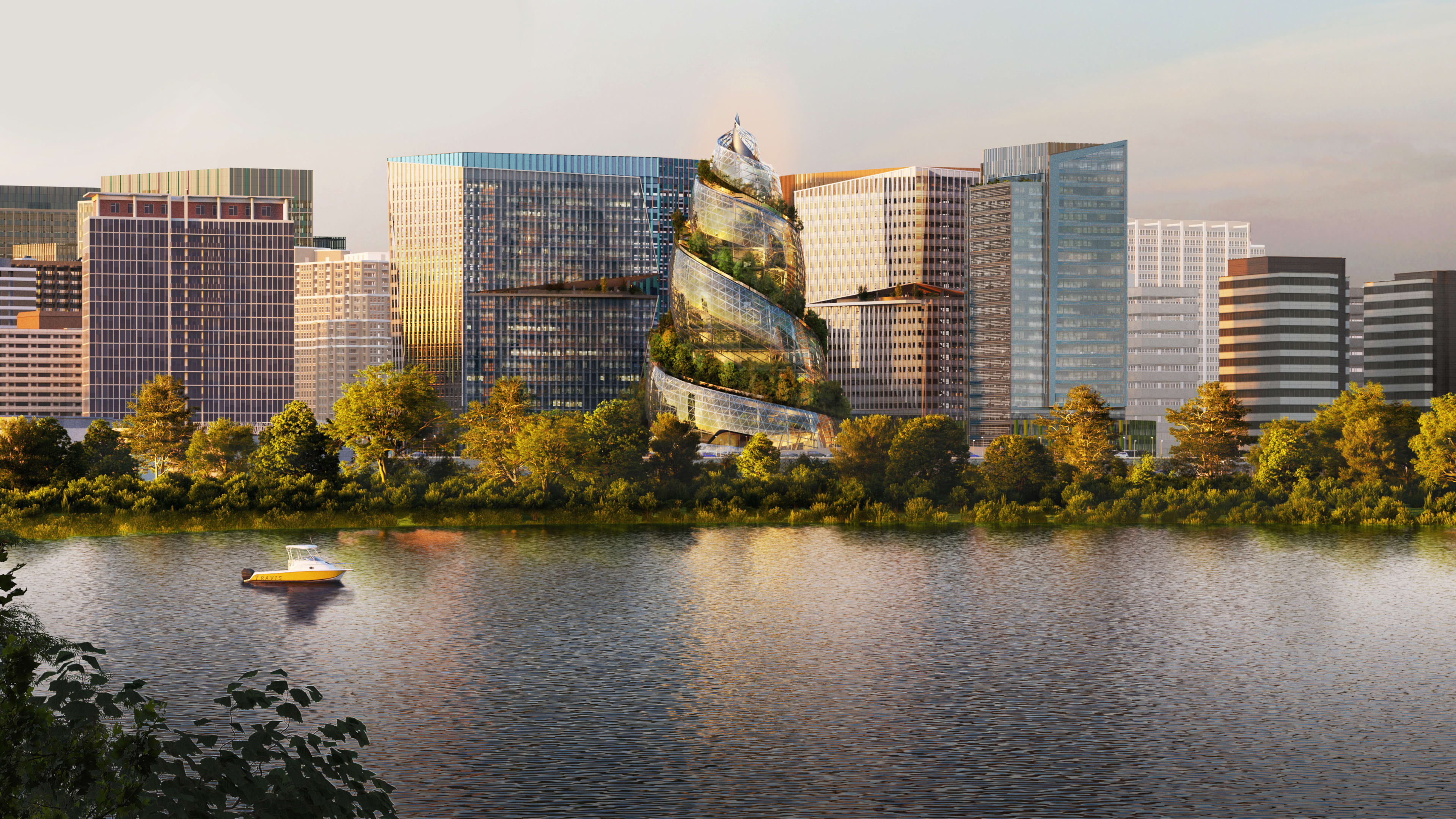A mountain of glass and steel is soon to rise in Arlington, Virginia. Spiraling up from the earth and interwoven with gardens, trees, and workspaces, the structure is the architectural centerpiece of Amazon’s HQ2, which is set to bring nearly 3 million square feet of office, retail, and public space to the company’s second headquarters, just outside Washington, D.C.
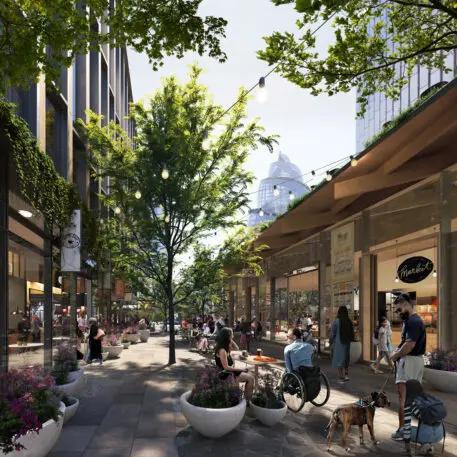
The design encompasses 2.8 million square feet of offices spread across three midrise towers, 100,000 square feet of retail space, a community center and daycare facility, 2.5 acres of public space, and, most prominently, the spiraling mountain building.
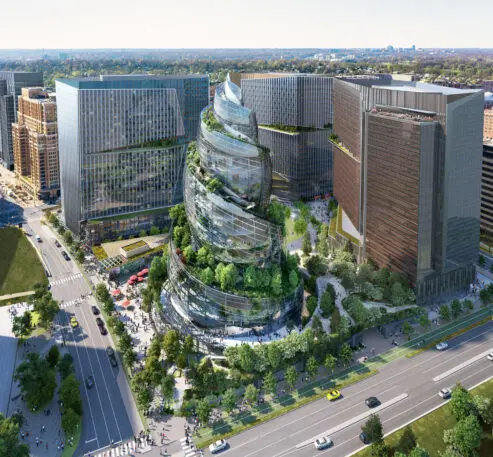
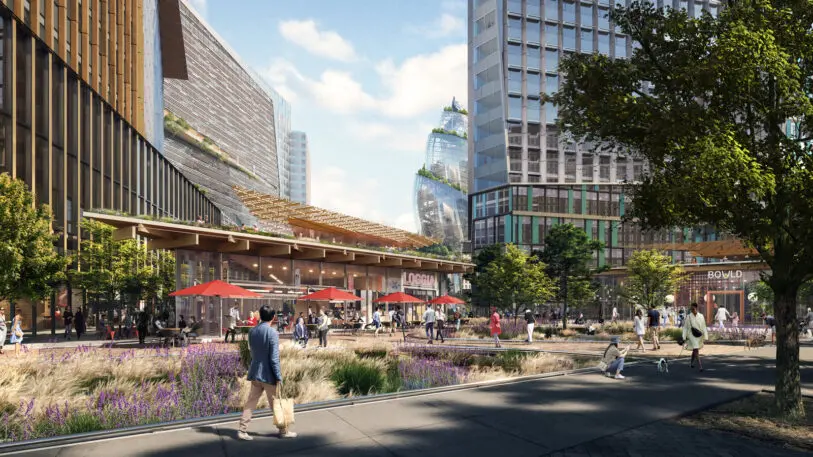
“We have designed spaces that promote physical well-being. We’re dealing with the whole person,” Schoettler says. “We’re thinking not only what it’s like for them to be inside, to be able to collaborate, but what is it like for them to be outside, and what does that mean for the local community.”
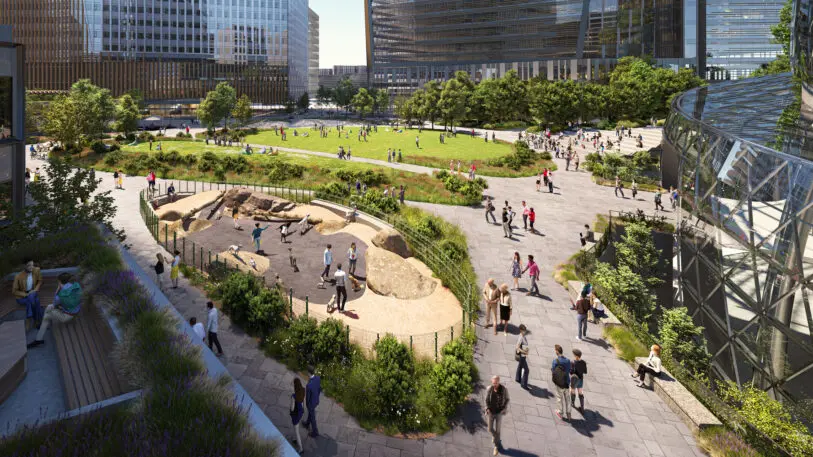
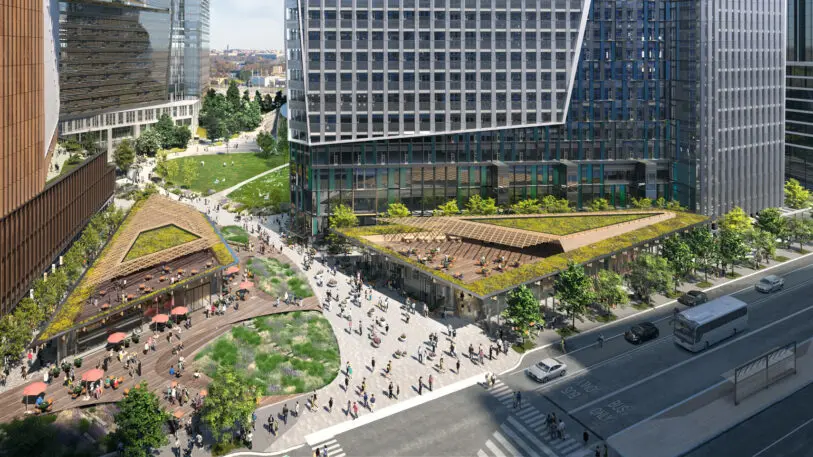
Instead, cars and service vehicles are redirected below ground, leaving the entire site a pedestrianized space. Lanes that would have otherwise been streets will now be walkable alleyways, connecting the retail pavilions that sit alongside the office buildings and serving as gateways to the surrounding neighborhood. The goal, Schoettler says, is for the site to be a place where Amazon employees and Arlington residents will feel equally welcome.
“We believe this headquarters should be integrated into the neighborhood, not closed off, not a place for Amazon employees only,” Schoettler says. “We’re really working hard to create an 18-hour district, a place that people will want to come to, not just travel through.”
Even the climbable mountain building will be open to the public, though only part time. Given the recent spate of suicides at the Vessel, another climbable piece of architecture at New York’s Hudson Yards, restrictions on this amenity may end up needing to be even more stringent.
Plans for this phase of the design are now being presented to Arlington County, and a public comment period will follow. But the project is far from over. A second site a few blocks away, which began construction in 2020, will add another 2.1 million square feet of office space to HQ2. In total, the two developments will house about 25,000 employees and become a distinctive addition to Arlington’s skyline.
NBBJ, which also worked on the spherical buildings at Amazon’s Seattle offices, still has some technical details to figure out regarding the Helix. The workspace-garden-mountain is “absolutely a challenge,” Alberda says. “And in fact, Amazon said this shouldn’t be easy. It should be difficult to do. If it’s too easy, we’re not doing it right.”
That may be a valid motto for the entire HQ2 process.
Recognize your brand’s excellence by applying to this year’s Brands That Matter Awards before the early-rate deadline, May 3.
